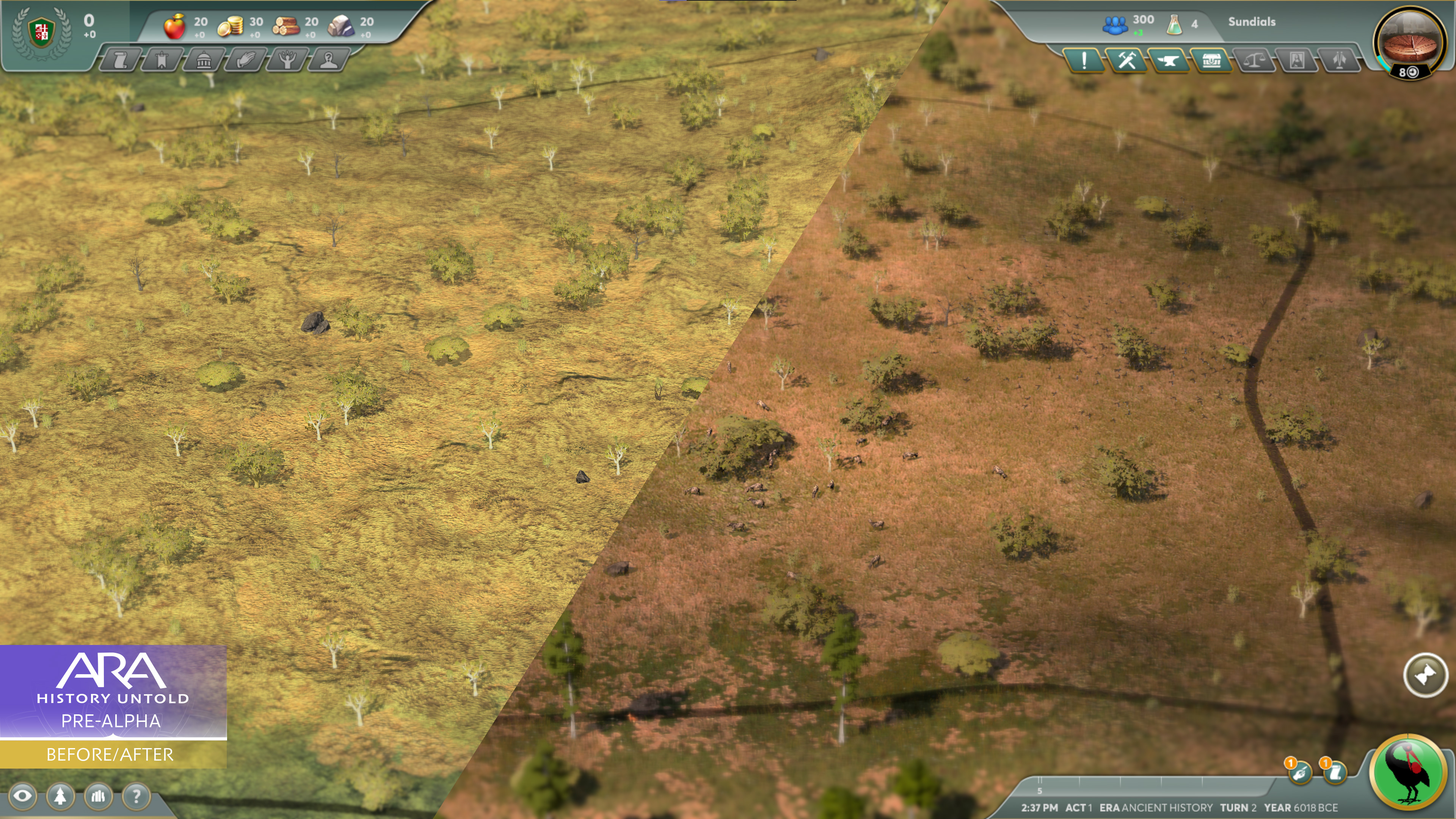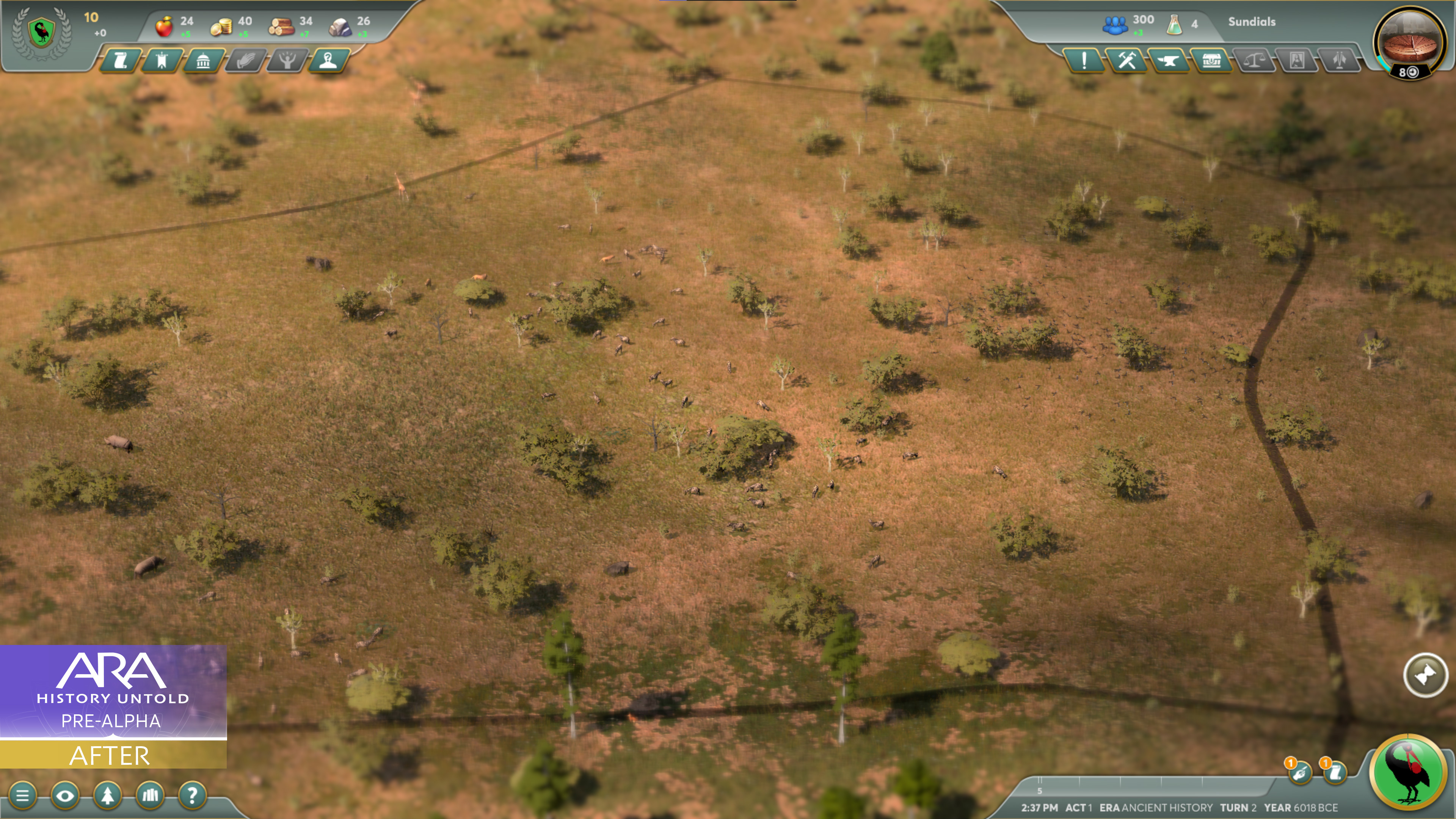Ara: History Untold's Living World - Biomes
The living world in Ara: History Untold is meant to reflect the real world's natural biodiversity. This is why the game features twelve biomes, all of which present unique challenges and opportunities to the player's budding nation.
Each biome has a baseline amount of resources such as food, wood, and stone, however, specific biomes can provide more or less additional resources when an appropriate improvement is built.
Biomes also affect which Dangerous Wildlife may appear - while a Temperate Forest may contain cougars, a Savannah may instead be teeming with lions, which are harder to clear. Other natural resources use a similar system - Cows are more likely to inhabit the Temperate Grassland while Camels are more likely to reside in the Arid Desert.
The distinct makeup of each biome ensures that a player can employ unique strategies in each playthrough, and create nations shaped by the world around them.
 A screenshot of Ara: History Untold's savannah biome.
A screenshot of Ara: History Untold's savannah biome.
 A screenshot of Ara: History Untold's tropical forest biome.
A screenshot of Ara: History Untold's tropical forest biome.
 A screenshot of Ara: History Untold's temperate grasslands biome.
A screenshot of Ara: History Untold's temperate grasslands biome.
For more details about Ara: History Untold, be sure to stay tuned to our Community Hub! We will be releasing future news posts on Mondays, with our next one coming out on June 5th.
https://store.steampowered.com/app/2021880/Ara_History_Untold/
Each biome has a baseline amount of resources such as food, wood, and stone, however, specific biomes can provide more or less additional resources when an appropriate improvement is built.
Biomes also affect which Dangerous Wildlife may appear - while a Temperate Forest may contain cougars, a Savannah may instead be teeming with lions, which are harder to clear. Other natural resources use a similar system - Cows are more likely to inhabit the Temperate Grassland while Camels are more likely to reside in the Arid Desert.
The distinct makeup of each biome ensures that a player can employ unique strategies in each playthrough, and create nations shaped by the world around them.
 A screenshot of Ara: History Untold's savannah biome.
A screenshot of Ara: History Untold's savannah biome. A screenshot of Ara: History Untold's tropical forest biome.
A screenshot of Ara: History Untold's tropical forest biome. A screenshot of Ara: History Untold's temperate grasslands biome.
A screenshot of Ara: History Untold's temperate grasslands biome.For more details about Ara: History Untold, be sure to stay tuned to our Community Hub! We will be releasing future news posts on Mondays, with our next one coming out on June 5th.
https://store.steampowered.com/app/2021880/Ara_History_Untold/
 A screenshot of undiscovered grapes in Ara: History Untold.
A screenshot of undiscovered grapes in Ara: History Untold. A screenshot of a farm in Ara: History Untold.
A screenshot of a farm in Ara: History Untold. A screenshot of an early settlement in Ara: History Untold.
A screenshot of an early settlement in Ara: History Untold. A screenshot of the Ara: History Untold Insider Forums, where one user writes: "I hate cougars I hate cougars I hate cougars"
A screenshot of the Ara: History Untold Insider Forums, where one user writes: "I hate cougars I hate cougars I hate cougars" A screenshot of Ara: History Untold UI showing that wolves will bolck the use of the area until they are defeated.
A screenshot of Ara: History Untold UI showing that wolves will bolck the use of the area until they are defeated.





